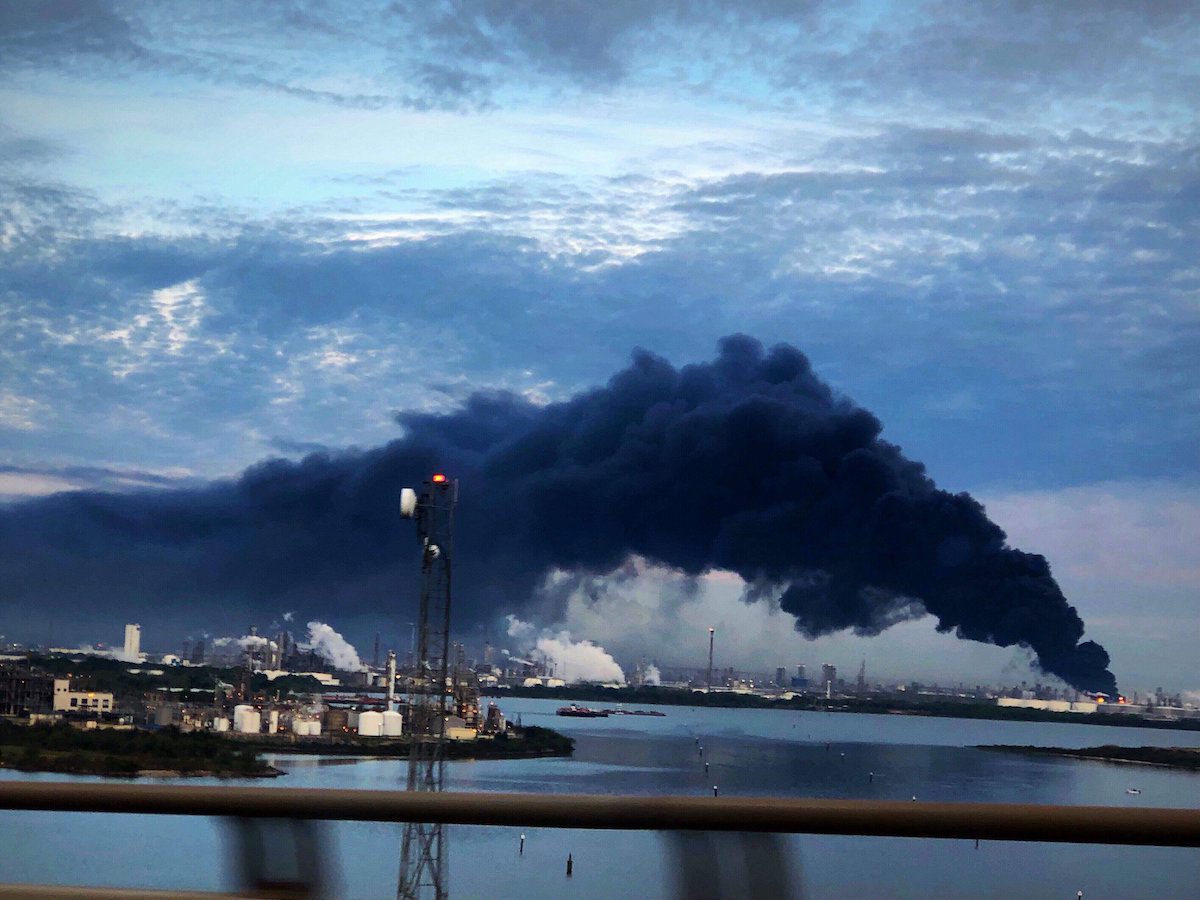Smoke rises from a fire burning at the Intercontinental Terminals Company in Deer Park, east of Houston, Texas, U.S., March 18, 2019. Jaimie Meldrum/@jamiejow/Handout via REUTERS
Update: Residents of Deer Park in the Houston-area were issued a shelter-in-place advisory Thursday after the petrochemical plant fire that burned for days released high levels of volatile organic compounds into the air.
 By Collin Eaton and Erwin Seba HOUSTON, March 20 (Reuters) – State and local investigators have begun probing a petrochemical storage company outside Houston where a massive fire fed by giant tanks of fuel burned for days, darkening the skies with soot for dozens of miles, officials said.
By Collin Eaton and Erwin Seba HOUSTON, March 20 (Reuters) – State and local investigators have begun probing a petrochemical storage company outside Houston where a massive fire fed by giant tanks of fuel burned for days, darkening the skies with soot for dozens of miles, officials said.
The blaze at Mitsui unit Intercontinental Terminals Co (ITC) in Deer Park, Texas, began on Sunday and was not extinguished until early Wednesday. It destroyed 11 tanks that can hold up to 80,000 barrels of gasoline and other fuels.
There were no injuries and a cause of the fire has not been determined, officials said.
The state’s environmental regulator said it has begun an investigation into the incident. The agency has cited Intercontinental Terminals for violations of state air-emissions rules 39 times in the last 16 years.
State regulator Texas Commission on Environmental Quality estimated that on the first day of the fire 6.2 million pounds of carbon monoxide and thousands of pounds of nitrogen oxides, sulfur dioxide and toluene were released.
Adam Adams, an Environmental Protection Agency (EPA) official, said he did not know if the federal agency was conducting its own investigation.
The Harris County district attorney’s office assigned an environmental prosecutor to monitor local and federal reviews of the fire for possible wrongdoing, said spokesman Dane Schiller.
That office last year charged chemical company Arkema North America and two of its executives with endangering the public with toxic emissions released during a fire that caused at least 21 injuries.
The EPA’s Adams said air-monitoring systems near the site along the nation’s busiest petrochemical shipping port found no hazardous levels of volatile organic compounds or particulate matter.
The agency will test local waterways for possible contamination from the millions of gallons of water and foam dropped on the fire since Sunday morning. Some of the liquids leaked out of a containment dike and into a nearby drainage ditch that feeds into the Houston Ship Channel, he said.
Measurements of soot and volatile organic compounds from the fire never exceeded dangerous levels, Adams and other officials said. A dark plume was visible from dozens of miles away and local residents reported acrid smells from the fire.
“We were fortunate there were good winds and vertical mixing that allowed the plume to rise and disperse more readily,” said Daniel Cohan, an associate professor of environmental engineering at Rice University in Houston.
The smoke likely does not pose a health risk beyond mild irritation for most healthy adults in Houston, said Adrian Shelley, director of the Texas office of the non-profit consumer advocacy group Public Citizen.
But those with respiratory illnesses such as asthma and emphysema were at higher risk of being affected by the elevated levels of particulate matter, Shelley said. (Reporting by Collin Eaton and Erwin Seba; writing by Gary McWilliams; Editing by David Gregorio)
(c) Copyright Thomson Reuters 2019.

 Join The Club
Join The Club











